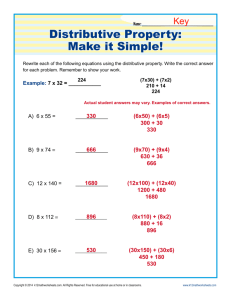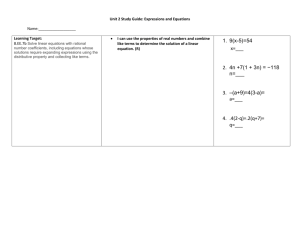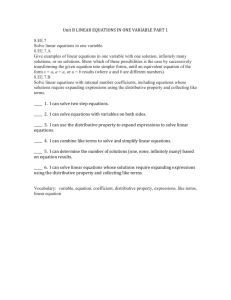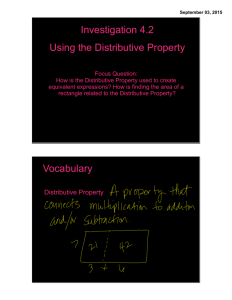9.5 Solve Equations by Applying the Distributive Property
advertisement
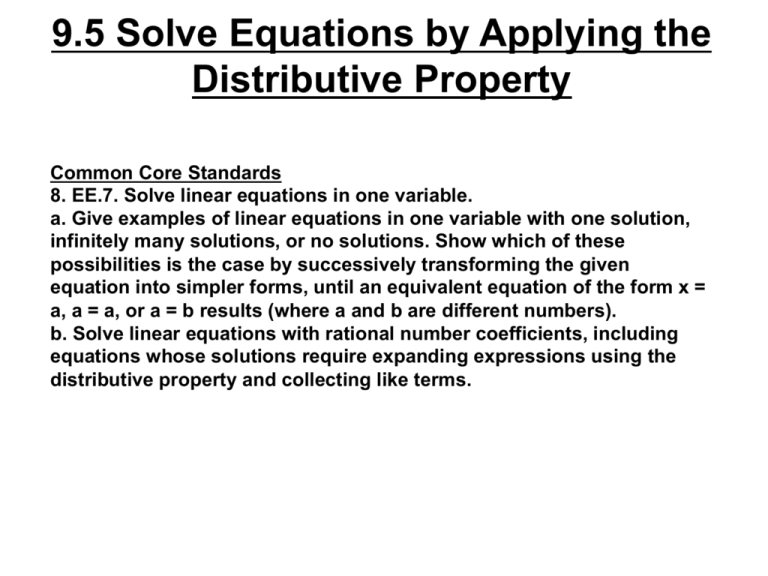
9.5 Solve Equations by Applying the Distributive Property Common Core Standards 8. EE.7. Solve linear equations in one variable. a. Give examples of linear equations in one variable with one solution, infinitely many solutions, or no solutions. Show which of these possibilities is the case by successively transforming the given equation into simpler forms, until an equivalent equation of the form x = a, a = a, or a = b results (where a and b are different numbers). b. Solve linear equations with rational number coefficients, including equations whose solutions require expanding expressions using the distributive property and collecting like terms. WARM-UP Simplify the expressions by applying the Distributive Property. 1) 7(2x + 5) 2) 9(x − 3) + 2y 3) −2(4x + 7) 4) −3(x − 8) Solve Equations by Applying the Distributive Property As equations get more complicated can we us the Distributive Property to make them simpler? 3(5x + 2) = 36 NOTES The Distributive Property can be used to remove parentheses from an equation. Concept Check Simplify the equation by applying the distributive property. 7(x − 2) = 21 2 = 2(4x + 9) NOTES Remember that subtraction is the same as "adding the opposite." Examples Solve the equations. 90 = −6(2x + 5) −(2x + 14) = 8 21 = −3(x − 5) EXAMPLES If the area of the rectangle is 90, solve for x. 6 2x + 3 EXAMPLES Solve the equations. 25 = −2(x + 5) + 7x EXAMPLES Solve the equation. 3(2x + 9) + 2(x − 3) = 29 Which equation is equivalent? 1 (10x − 15) = −12 5 a)2x − 3 = −12 12 b)2x − 3 = − 5 PRACTICE Solve the equations. 3(5x − 6) − 12x = 6 −2(x − 4) + 3(2x + 8) = 72 1 (12x − 3) = 19 3 PRACTICE Solve for x if the area of the rectangle is 51. 3 2x - 1 FINAL QUESTION Solve the equation. −(x − 2) + 3(2x + 6) = 50

